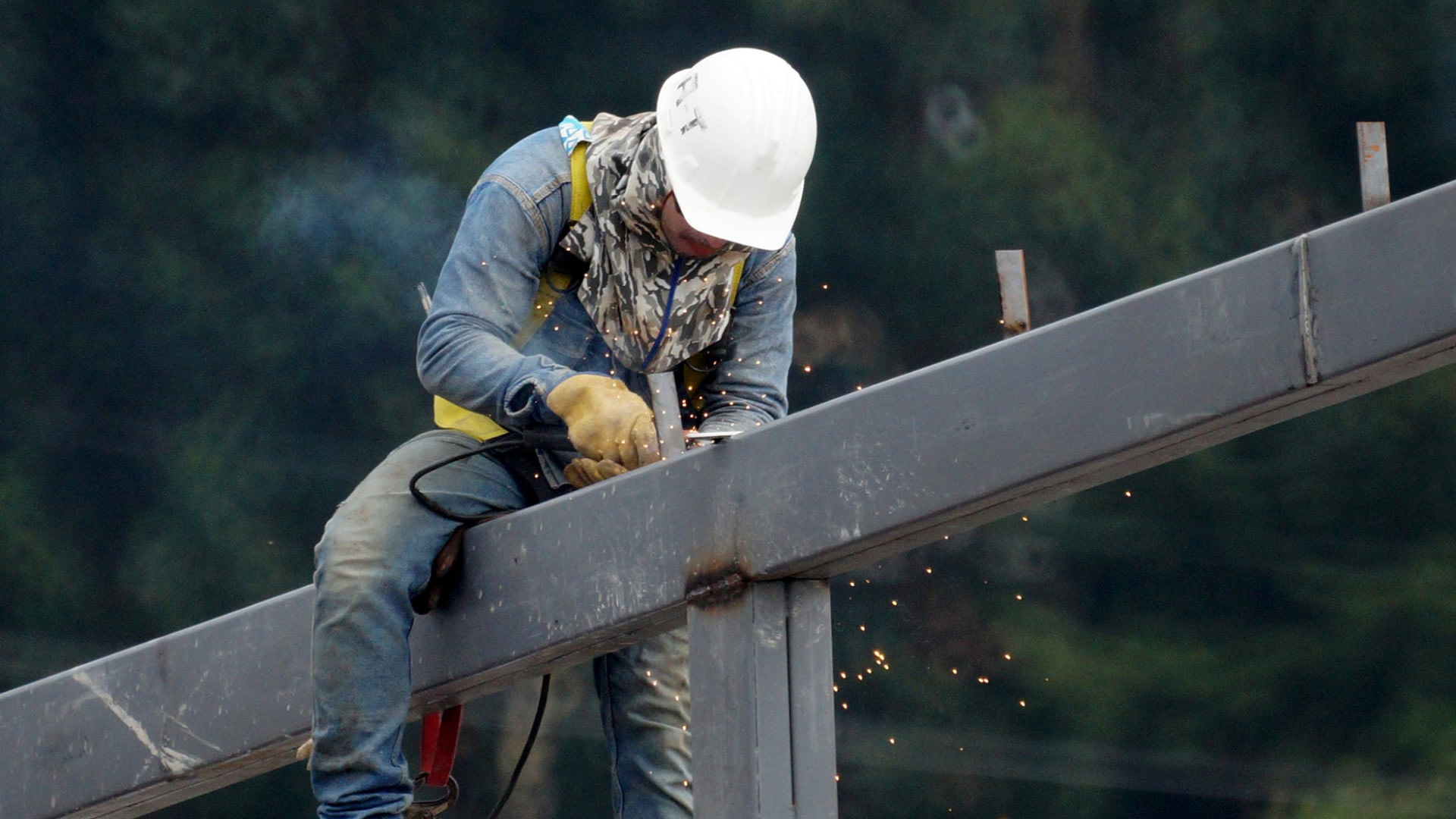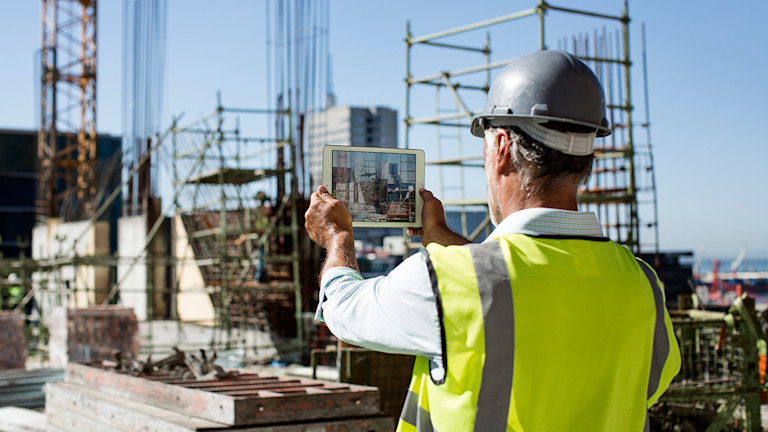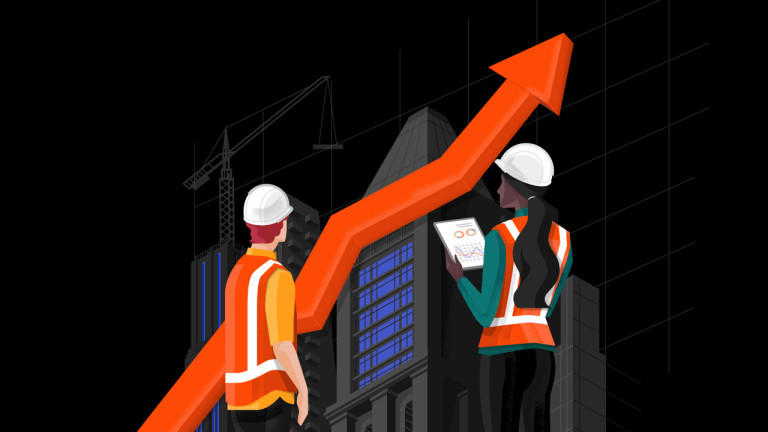Construction technology refers to the use of innovative tools, materials, and processes to improve the construction process in a multitude of ways.
By incorporating technology into your construction processes, you will be able to streamline workflow, get projects done faster, safer, and more efficiently.
The Impact of Technology on Construction Management
In Australia, 78% of construction businesses are focusing on adopting emerging technologies for their processes according to a 2022 survey by Statista.
The use of technology in construction is revolutionising the industry, enabling stakeholders to streamline construction processes, increase efficiency, and reduce costs. From digital tools that enhance collaboration and communication to data analytics and automation that improve project performance, construction technology is transforming the way construction projects are planned, managed, and executed.
In this article, we explore the ways construction technology is improving construction management and revolutionising the industry.
The preconstruction phase is crucial for setting the foundation of any construction project. Advancements in construction technology have revolutionised the way we approach the preconstruction phase, leading to more efficient, cost-effective, and streamlined construction processes.
These technologies can provide real-time feedback during the design process so that any changes or adjustments can be quickly made. Construction technology helps save time and money while providing more accurate results when it comes to preconstruction planning.
Project Planning and Design
Construction technology can benefit project planning and design. With the use of advanced software tools, project managers can create detailed models of buildings and infrastructure projects. These models can be used to identify potential design conflicts, test different design options, and optimise construction sequencing and scheduling.
By using digital tools like project management software, construction teams can track project progress, manage schedules, allocate resources, and monitor costs in real-time. Automated project tracking and reporting features help project managers stay on top of important milestones and identify potential risks before they become issues.
Improving Communication and Collaboration with Digital Tools
With advanced software like project management software, construction teams can improve information sharing — like receiving feedback and updates — while reducing the need for back-and-forth email exchanges and improving coordination.
By utilising construction technology, communication between teams is improved and decision-making is made more efficient resulting in better project management overall.
Construction Site Monitoring
Construction technology helps improve safety and will minimise disruptions on site by providing detailed real-time updates of the work in progress. Technology offers the ability to analyse past construction sites to examine any irregularities or mistakes and even provide predictive analytics that can detect any potential problems before they arise. By using construction technology to monitor your construction site, teams are able to stay up-to-date on the progress, reduce the risk of delays or inaccuracies due to manual errors, and improve overall efficiency.
Enhancing Safety and Efficiency with Real-Time Data
Technology provides real-time monitoring of construction sites, helping to identify potential safety hazards and improving overall site security. With the help of advanced sensors, cameras, and other digital tools, construction teams can collect and analyse real-time data on factors like worker location, temperature, humidity, air quality, and machine performance. This data can be used to identify potential safety hazards, monitor worker well-being, and optimise equipment usage and maintenance. With the use of predictive analytics and machine learning, construction teams can also predict potential safety issues, helping prevent them before they occur.
With these tools, project managers can make data-driven decisions that improve safety and efficiency on construction sites.
Supply Chain Management
With the help of construction management software, project managers can track and manage inventory levels, orders, and deliveries in real time. This visibility into the supply chain enables more efficient procurement processes, helping reduce delays and errors.
Digital collaboration tools can facilitate communication and coordination among suppliers, subcontractors, and project teams, enabling more effective supply chain management.
Optimising Material Procurement and Delivery with Technology
By leveraging construction technology, construction teams can optimise material procurement and delivery, driving more efficient, cost-effective, and streamlined procurement processes. This keeps them connected to the necessary stakeholders and identifying issues before they happen.
Quality Control and Assurance
With the help of digital inspection tools like advanced sensors and cameras, construction teams can monitor and analyse the quality of construction materials and workmanship, identifying potential defects and helping ensure compliance with industry standards and regulations.
With the use of predictive analytics and machine learning artificial intelligence, construction teams can analyse historical data to identify potential quality issues and develop proactive solutions to help prevent them from occurring.
Leveraging Digital Tools to Ensure Standards Are Met
Digital inspection tools can facilitate more accurate and efficient inspections, enabling construction teams to identify and address potential issues more quickly. This data can be used to identify potential issues and ensure that construction standards are met.
Building Information Modeling (BIM)
Building Information Modeling (BIM) is a digital representation of a structure that includes information about its physical and functional characteristics. BIM is a collaborative process that involves the creation and management of digital models, which are used by architects, engineers, contractors, and other stakeholders in the construction process.
BIM is a powerful tool for improving collaboration, reducing errors, and enhancing the overall quality of construction projects. The benefits of BIM include improved collaboration, reduced errors, enhanced quality, reduced waste, and increased efficiency throughout the construction process. BIM also enables stakeholders to make more informed decisions, reduce costs, and improve the sustainability of buildings.
Enhancing Project Visualisation and Planning
Construction technology is enhancing project visualisation and planning by enabling stakeholders to create and interact with digital models of construction projects. With the use of visualisation technologies and modelling, stakeholders can create detailed, lifelike representations of construction projects. These models can be used to identify potential issues, test design alternatives, and optimise construction sequencing before work begins.
Drones, robotics, and automation are increasingly being used in modern construction to enhance efficiency, safety, and accuracy.
Drones are commonly used to survey construction sites and gather data, providing a quick and cost-effective way to collect accurate data about a site's topography, elevation, and other features. Robots and automation such as artificial intelligence are being used in construction to perform tasks that are repetitive, dangerous, or time-consuming. Automated equipment such as cranes and excavators can be programmed to perform tasks such as digging, lifting, and moving materials, reducing the need for manual labour and enhancing efficiency.
Transforming Construction Operations
Construction technology is transforming construction operations in a number of ways. For example, digital tools such as BIM, project management software, and collaboration platforms are enabling stakeholders to share information and coordinate their efforts more effectively, helping reduce errors, and improve overall project quality.
As technology continues to evolve, it is likely that we will see even more significant changes in how construction projects are planned, designed, and executed.
Sustainable Construction
Construction technology promotes sustainable construction practices by enabling stakeholders to optimise the use of resources, reduce waste, and promote sustainable building design and construction practices.
Using Technology to Promote Environmentally Responsible Building Practices
Using technology to promote environmentally responsible practices is becoming increasingly important as the construction industry strives to reduce its environmental impact. Using technology is critical in achieving sustainable construction and ensuring that the construction industry plays a positive role in protecting the environment for future generations.
Risk Management in Construction Using Data
Construction technology is improving risk management in construction projects by providing real-time visibility into project progress, enabling more accurate forecasting and planning. This allows teams to identify potential risks before they become reality and plan for contingencies appropriately.
Mitigating Risks in the Construction Process with Technology
Automated systems help reduce human error and improve accuracy, while improved safety protocols reduce the chance of accidents on site. For example, wearable technology can monitor workers' vital signs and alert supervisors to potential health risks, while drones can survey sites for potential safety hazards from a safe distance.
The use of data in construction provides all stakeholders with insights and information that can help lead to better decision-making, increased efficiency and productivity, improved quality control and assurance, better communication and collaboration, and improved safety on construction sites.
Leveraging Data Analytics to Improve Project Performance
By collecting and analysing data, teams can gain insight into project progress and identify any potential risks before they become reality. Analytics-based predictions allow teams to anticipate delays or unexpected problems that could result in financial losses, allowing them to take proactive steps to mitigate these risks.
Trends that Will Influence the Construction Industry
Many technological trends are influencing the construction industry in Australia. One is the application of predictive analytics allows businesses to anticipate potential issues before they occur and plan accordingly. As well as the increasing adoption of BIM technology that is transforming design workflows by enabling teams to collaborate more effectively.
Improvements in energy efficiency, such as the adoption of solar power and energy storage units, help to reduce operating costs for construction companies. Autonomous vehicles are increasingly being incorporated into construction sites, providing increased safety and improved accuracy when measuring distances or completing inspections.
Embracing the Future of Construction Management with Technology
The future of construction management with technology is promising, as construction technology continues to advance and transform the industry.
The benefits of construction technology are numerous, including improved communication and collaboration, enhanced safety and efficiency, better supply chain management, improved quality control and assurance, and sustainable construction practices. The use of digital tools and data analytics is becoming more prevalent, enabling stakeholders to make data-driven decisions and improve project performance. Emerging technologies like drones, robotics, and automation are also being used to increase productivity and safety on construction sites.
Looking forward, construction technology will continue to shape the industry, driving efficiency, safety, sustainability, and innovation.
Pixelate your Construction Projects
To continue into the digital, pixelated construction industry, you need software that can keep your team as connected and safe as it can while collecting and storing every piece of information along the way.
With Procore, you can work more efficiently, communicate better, and build faster from a single source of truth. See how you can do more on the leading construction management platform.
Procore is a construction project management tool that streamlines processes and provides real-time visibility into each project’s progress. Procore software allows for easy communication and collaboration, tracking of tasks and budgets, data analysation, job-site image and video collection, document organisation, job scheduling, takeoff measurements and more — all in one convenient place.
With Procore, architects and construction professionals can reduce delays and save time, enabling them to focus on delivering successful projects with maximum efficiency.







